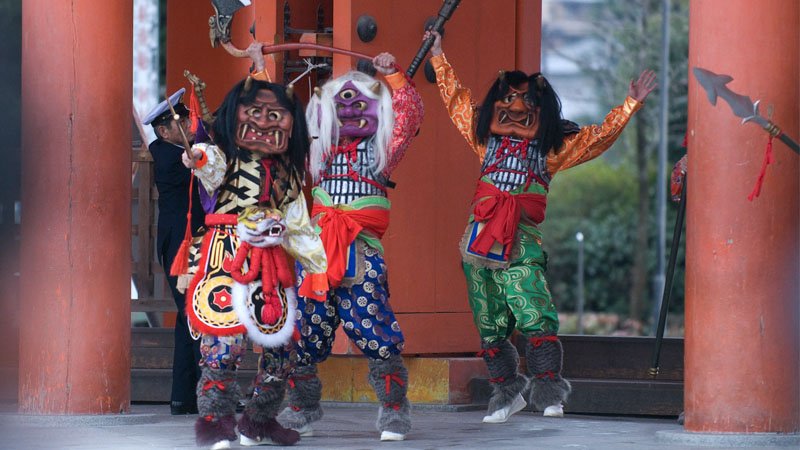Did you know that in Japan there is a holiday where people dress up as oni (demons), while others throw soybeans at these people? Today we will talk about the spring festival called setsubun.
At this time, climate change tends to cause illnesses, for this reason the Japanese believed that the cause could be demons, so they scared them away with sojas shouting “Oni out! Good luck in!”.
The changing of seasons has names: Spring (risshun), Summer (rikka), Autumn (risshuu), and Winter (ritto);
Table of Content
What is Setsubun?
Setsubun [節分] literally means “to divide or separate seasons”, it is a holiday celebrated in early February to say goodbye to winter and enter spring (it usually falls between February 2nd to 4th).
On this day, the Mamemaki [豆撒き] takes place, a ritual conducted by the head of the family or a member who has the corresponding Chinese zodiac sign of the year. In this ritual, roasted soybean grains are thrown at someone dressed in the Oni mask (ogre, demon).
During this ritual, the members shout: "Fukuwa Uchi" (Welcome happiness, luck, good things) "Oniwa soto" (Out with the demons, bad luck, bad things). This custom was introduced by the Chinese to Japan in the eighth century.
In Japanese it is written: 鬼は外福は内
Origin of Mamemaki Oni
Like most customs, this one was introduced by the Chinese. In Japan this ritual began in the ceremony called Tsuina or Oniyarai, which was performed in late winter, in the house of the emperor of the Heian period (794 to 1185).
In the story the characters represented are an Oni and a woman. According to an old legend, an old lady tries to steal something from an old man. But the figure of the old man was a disguise of the Oni (ogre) who has the power to disguise himself as a human being.
When the old man saw the robbery, he ended up revealing his true ogre nature. Startled, the old woman grabbed the first thing she saw: soybeans and threw them at him. That's how the tradition of throwing soybeans mamemaki was born.
This custom dates back to the year 706 when it was actually used with "peach branches," and only after the mentioned history did it start to use soybeans. The peach is related to the fable of momotarou who defeated onis.

Why Soy Beans?
The Japanese believe that soybeans are a symbol to purify the house and drive out all evil spirits and bad luck. And the spring setsubun was and perhaps still is considered by some to be the Lunar New Year in the calendar, that is, a kind of New Year's Eve.
This date was accompanied by an extensive special ritual of purification from the evil of the previous year and the warding off of demons that might bring disease in the following year.
Another custom is to eat soybean foods, preferably the amount of soybeans equivalent to your age to maintain great health. Among them, we have natto, misoshiru, and tofu, we even have an article about soy-derived foods.
People also eat a special sushi called Ehoomaki. This sushi cannot be sliced, as cutting means rupture, separation, and with that, one can cut luck.
At the festival, the temples are decorated with white and red colors, where the celebrations take place, it is customary to throw special grains for the visitors. Although Setusbun is celebrated throughout Japan, it is not considered a national holiday.
The video from the channel below shows a little more about this ritual Mamemaki practiced by students of a school:
